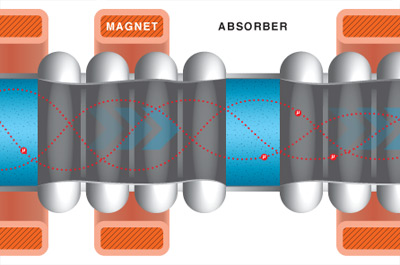
Muon Cooling
When scientists make muons, the particles start life as a hot gas. But to accelerate those muons, scientists need them organized in a cold beam: the muons must have little transverse momentum so that the beam stays narrow and fits through the beam pipe in the muon accelerator. This task might be the most challenging aspect of building a muon accelerator.
At Rutherford Laboratory in the United Kingdom, an international team of scientists is testing a new technique called ionization cooling. It allows scientists to shape the hot muon gas into a cold beam that will fit within the accelerator. Ionization cooling reduces the transverse, ”hot” motion of the muons by slowing them down, and then accelerating them in forward direction. This process is repeated many times. It redirects the muons, creating a nice parallel beam of particles.




